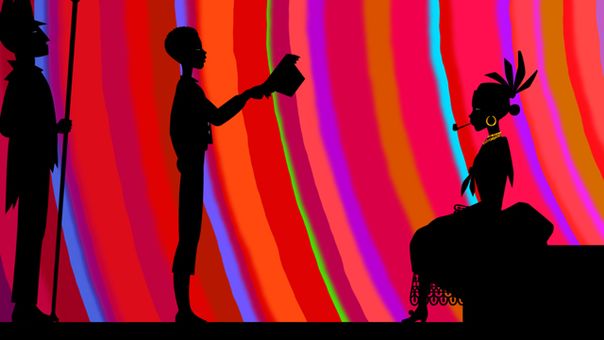Colorful Shadows
Animation expert Michel Ocelot visits the Berlinale with his unique 3D puppetry film TALES OF THE NIGHT.

TALES OF THE NIGHT
Nightly collaborations by a boy, a girl, and a master technician give rise to tales that burst with magic in Michel Ocelot’s TALES OF THE NIGHT. It is impossible even for the sternest of critics not to enjoy the film and be reminded of times when things were simpler and did not involve elaborate plotlines and super-sophisticated designs. Ocelot pits shadow puppets, whose details are reliant on the lines and curves dictated by costumes, against lush backgrounds, creating an otherworldy atmosphere in settings that are based in history. The six tales, all equally charming, explore these settings, whether it be modern Africa or medievel Europe.
As opposed to James Cameron’s AVATAR and the dozens of other Hollywood productions that utilise 3D to create an illusion of depth in an otherwise flat space, TALES OF THE NIGHT makes use of 3D only to further a crucial element of shadow puppetry, which is the separation of subject and background. Ocelot replicates the wonderment of the ancient craft onscreen, telling the six stories with refreshing clarity and a distinct look.
Compared to Lotte Reiniger’s THE ADVENTURES OF PRINCE ACHMED, which remains the pinnacle of this underepresented style, TALES OF THE NIGHT lacks the unrestrained sensuality that Reiniger, even without the conveniences provided by modern film equipment and 3D technology, has so masterfully injected in her film. Perhaps, had Ocelot resisted romanticising love in a way that is similar to nearly all of the Disney studio’s many retellings of classic fairy tales, the film could have been less saccharine and more alluring about love and romance.
Despite that, TALES OF THE NIGHT remains a fine piece of work. In a festival that puts a premium on the more serious aspects of life, Ocelot has conjured up tales that value fantasy and the allure of happy endings. This way he has created a film that is remarkably universal despite the myriad of cultures from which it liberally borrows. The film celebrates the power of stories and how, in both their creation and their consumption, they unite humanity.


301 Moved Permanently